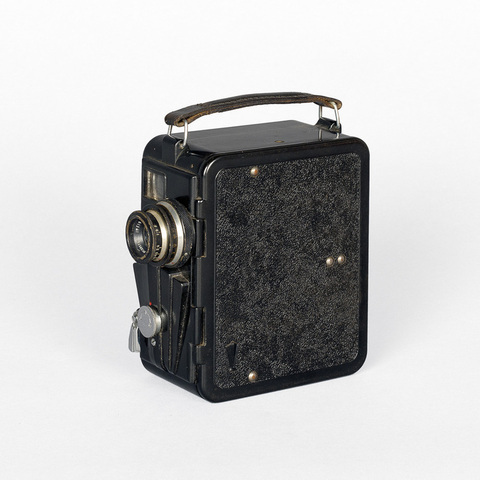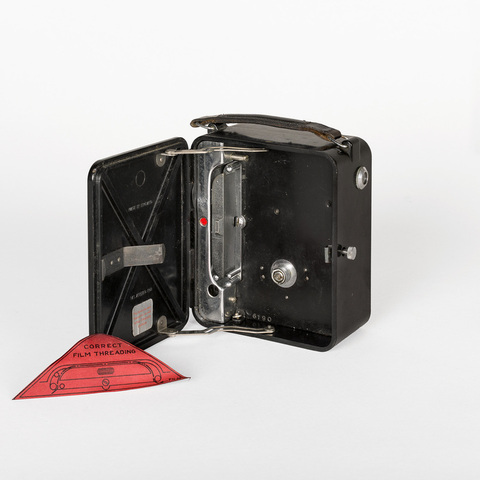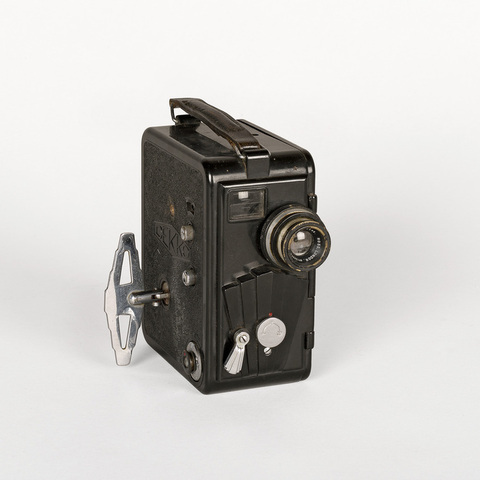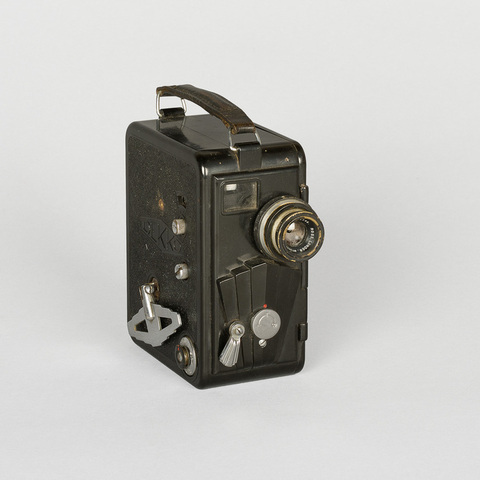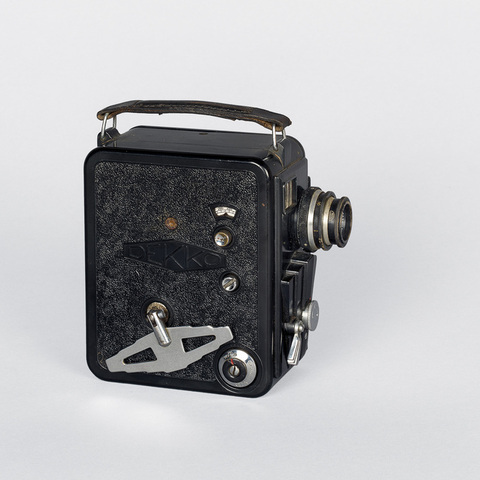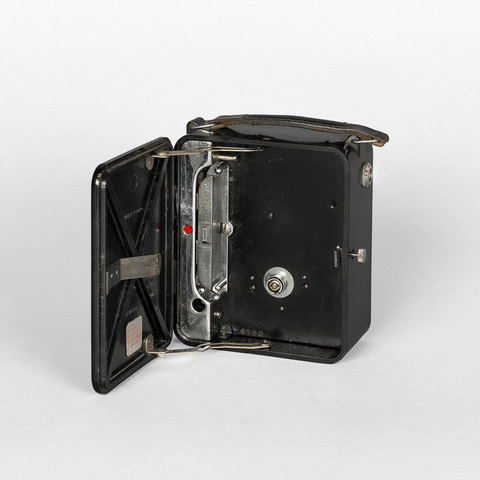Caméra film 9,5 mm
Fiche détaillée
Type de l'appareil
entraînement du film 9,5 mm par une griffe ; emplacement intérieur pour chargeur type Pathé 10 m. de film ; moteur à ressort ; compteur de pieds ; variateur de vitesse slow, normal, ultra fast ; prise de vues image par image ; poignée cuir ; viseur ; corps en bakélite noire
Auteurs
Informations non disponibles
Fabricants
Dekko Cameras Limited
Slough, Bucks, depot London, 17 Thavies Inn, E.C.1
Utilisateurs
Informations non disponibles
Distributeurs
Dekko Cameras Limited
Slough, Bucks, depot London, 17 Thavies Inn, E.C.1
Sujet du modèle
Informations non disponibles
Objectif
Cine lens Ross London n° 135 576, 1 in. F. 1.9
Taille de l'objet
Ouvert :
Informations non disponibles
Fermé :
Longueur : 13.5 cm
Largeur : 7 cm
Hauteur : 14 cm
Diamètre :
Informations non disponibles
Taille de la boîte de transport
Informations non disponibles
Remarques
Marque : "Dekko".
Un projecteur 9,5 mm a été également commercialisé par Dekko en décembre 1935. La caméra est utilisée en 1937 pour les films en couleurs Dufaycolor. Un modèle identique de caméra, mais corps en aluminium, est commercialisé en 1938.
"The Dekko Camera. The new Dekko camera is bound to arouse considerable interest ; not only because of its very attractive price, but also because it has such desirable fittings as half speed, normal speed, and slow motion ; single-frame exposure release, and interchangeable lenses. We have now had an opportunity of testing this camera, and are very pleased with the results obtained. [...] The mechanism operates with great smoothness - not only on the half and normal speeds, but also (we admit to our surprise !) on the slow motion. As the camera takes a standard Pathé charger, and there is no sprocket feed, we should not have been surprised to have found some unsteadiness on the slow motion action, but on testing this on one of our standard slow motion subjects, we found that the picture, when projected on the screen, was rock steady and of good definition through-out with real slow-motion effect" (Home Movies & Home Talkies, juillet 1934, p. 60).
"The new Dekko sets the standard for 9,5 mm cameras. Bristling with modern features - yet sells at only £ 6.6.0. Recessed footage indicator giving clear reading in feet, on coloured dial. Chromium plated indicator resetting knob. Handsome bakelite case to withstand long wear without the shabbiness which is inevitable with leather covered or enamelled metal cases. All metal parts chromium plated. Brilliant viewfinder of the direct type, very close to the camera lens to ensure accuracy. Speed regulator for 8, 16, 24, 32, and 64 frames per second. British made throughout. Here at last is a camera of moderate price which is complete with all modern improvements - real slow motion pictures which are rock steady. Great smoothness of operation at all speeds. The practical Dekko speed regulator allows for all speeds from 8 to 64 frames per second. The first camera to give the 9,5 mm enthusiasts all the advantages hitherto enjoyed only by the owners of larger and much more expensive cameras. Fitted with Ross f. 1.9- 1 in. Micrometer focusing lens, £ 9. 18. 6" (Home Movies & Home Talkies, septembre 1934, p. 158).
"La firme Dekko a acquis en Grande-Bretagne une certaine notoriété avec sa caméra 9,5 mm à chargeur d'aspect sensiblement identique à celui de la motocaméra Pathé ; le nouveau modèle de luxe en boîtier métallique offre tous les perfectionnements, tels que couloir à presseur amovible, viseur à correction de parallaxe, moteur à ressort capable de dérouler les 9 m de film du chargeur, indicateur de métrage, vitesse variable de 8 à 64 images, déclencheur vue par vue ; le couloir à presseur amovible permet l'emploi du film en couleurs Dufaycolor et peut s'adapter sur la caméra Dekko modèle standard" (Cinéma pour tous, n° 3, novembre 1937, p. 12).
Bibliographie
Home Movies & Home Talkies, juin 1934, p. 25 ; juillet 1934, p. 60.
Cinéma pour tous, n° 3, novembre 1937, p. 12.
Cinéma privé, n° 63, mai 1939, p. 3 ; n° 65, juillet 1939, p. 6 ; n° 66, août 1939, p. 4.
